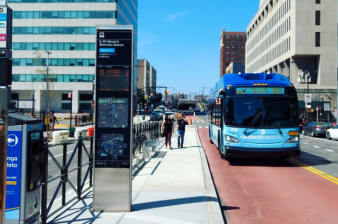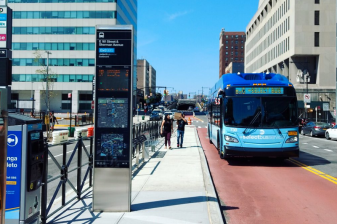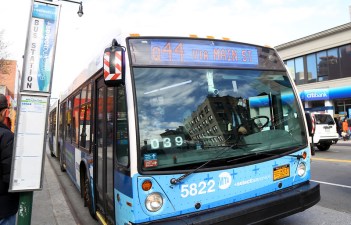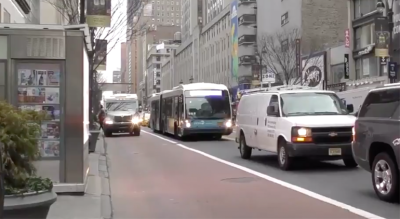De Blasio Announces 10-Year Plan for 21 More Select Bus Service Routes
The map of enhanced bus routes looks good, but the timetable isn't much more ambitious than what the city is doing already.
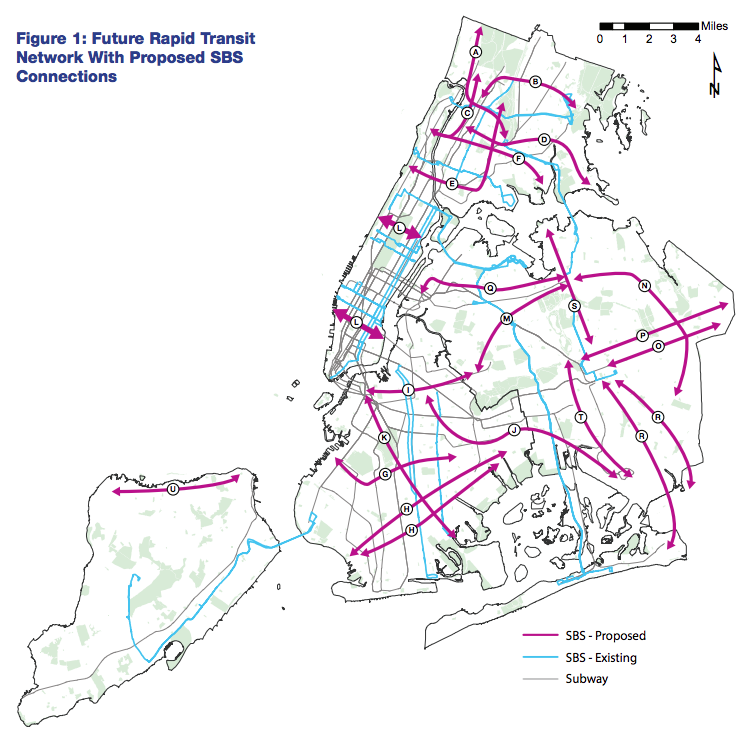
The city plans to roll out 21 new Select Bus Service routes over the next decade, as well as bus priority treatments on other routes, Mayor de Blasio announced today. The proposed SBS routes in the “Bus Forward” plan [PDF] would more than double the reach of the city’s enhanced bus network, but the 10-year timetable lacks urgency and ambition.
The first Select Bus Service route launched in 2008 on Fordham Road. At the time it was a breakthrough — the only bus route in the city with off-board fare collection. There are now 14 SBS routes in the city that use a combination of pre-paid boarding, bus lanes, bus bulbs, signal preemption at intersections, and other transit priority measures to speed transit trips.
SBS routes have, in general, bucked the trend of declining bus ridership in NYC. They only account for 13 percent of the city’s bus riders, however. Overall, the city’s bus fleet remains the slowest in the nation.
The 10-year plan from de Blasio would raise the share of bus riders on SBS routes to 30 percent. But the idea that these improvements should be implemented on a route-by-route basis is starting to feel antiquated.
The MTA could go live with all-door boarding system-wide within a few years, and DOT has the power to implement signal priority for buses wherever the agencies choose. Limited stop service and street design treatments like bus lanes and bus bulbs could still distinguish SBS routes, but street improvements don’t have to be limited to a set number of routes either.
To be fair, the city and the MTA aren’t limiting themselves to SBS routes. They’re using real-time GPS data to target areas where elements of the SBS package would be beneficial.
But the pace and scale of the new plan doesn’t sufficiently address the urgent need to improve service. Every year, more riders are abandoning the bus, while a growing number of people opt for street-clogging ride-hail services like Uber and Lyft that slow down surface transit even more. DOT and the MTA need to pick up the pace.
In August, advocates with the Bus Turnaround Campaign graded DOT and the MTA on their rollout of bus improvements. DOT got a “D+” on redesigning streets to prioritize buses because the de Blasio administration hasn’t made progress fast enough. The 21-routes-in-10-years timetable isn’t much of a boost.
The budget numbers in the “Bus Forward” report are revealing. The city says $9.4 million “is dedicated to SBS projects in NYC DOT’s annual expense budget.” (More funds are allocated to the “launch of SBS and bus priority projects” but the city doesn’t specify how much.)
Compare the annual set-aside for SBS to the city’s $30 million annual subsidy for ferry operations. While the whole ferry system moves fewer people than a single well-used bus route, the de Blasio administration is spending more to run ferries than to upgrade streets for bus riders. Bus riders deserve more.
“We’ve learned that SBS works; it’s time to spread the benefits of Select Bus Service far and wide so that bus riders have faster commuters no matter what bus they board,” said Tri-State Transportation Campaign Executive Director Nick Sifuentes.
